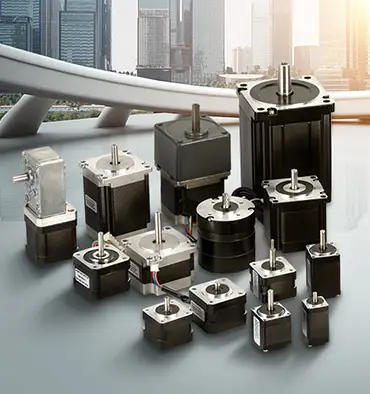Can a stepper motor run continuously?
The question of whether a stepper motor can run continuously is an important one, as it can have a significant impact on the performance and reliability of the motor. In this article, we will provide a detailed explanation of how stepper motors work, and whether they can run continuously. We will also discuss the advantages and disadvantages of running a stepper motor continuously, and why it may or may not be a good idea.
What is a Stepper Motor?
A stepper motor is an electric motor that rotates in discrete steps, or increments, rather than continuously. This makes it ideal for applications where precise control of the motor's position is necessary, such as in printers, scanners, and other types of precision machinery.
Stepper motors are different from other types of motors in that they have a fixed number of steps per revolution. This means that the motor can only rotate in discrete steps, rather than continuously. For example, a stepper motor with 200 steps per revolution will rotate in 200 equal steps, each corresponding to a 1.8 degree increment of rotation.
Can a Stepper Motor Run Continuously?
Now that we have a basic understanding of how stepper morors work, we can answer the question of whether they can run continuously. The short answer is that stepper motors can run continuously, but they are not designed to do so.
This is because stepper motors are designed to rotate in discrete steps, rather than continuously. This means that they are not well suited for applications that require continuous rotation, as they may not be able to maintain a constant speed or produce a steady output of power. In order to run a stepper motor continuously, it would be necessary to modify the motor's design, which can be difficult and costly.
Additionally, stepper motors are not typically designed to withstand the forces associated with continuous rotation. They are designed for precision movement, rather than for generating large amounts of torque or power. As a result, running a stepper motor continuously may cause it to wear out or fail prematurely.
Advantages of Running a Stepper Motor Continuously
Despite these challenges, there are some advantages to running a stepper motor continuously. Some of the main advantages of running a stepper motor continuously include:
- Flexibility: Stepper motors are versatile and can be easily modified to run continuously, making them a flexible option for a wide variety of applications.
- Precision: Stepper motors are designed for precision movement, which means that they can be used to generate power with high accuracy and control.
Disadvantages of Running a Stepper Motor Continuously
Despite these advantages, there are also some significant disadvantages to running a stepper motor continuously. Some of the main disadvantages of running a stepper motor continuously include:
- Efficiency: Stepper motors are not the most efficient motors, as they are not designed to rotate continuously. This means that they may not produce as much power as other types of motors.
- Durability: Stepper motors are not designed to withstand the forces associated with continuous rotation, which means that they may wear out or fail prematurely.
- Cost: Modifying a stepper motor to run continuously can be costly and time-consuming, making it a less cost-effective option than other types of motors.
Conclusion
In conclusion, stepper motors can run continuously, but they are not designed to do so. They are not the most efficient or effective motors for applications that require continuous rotation, and running them continuously may cause them to wear out or fail prematurely.


Leave a Reply